
by AGParts Education | Chromebooks, Education Technology, Laptops, Notebooks, UL-Certified AC Adapters
With any educational technology program, AC adapters, aka power chargers, are crucial to sustain the daily functionality of your Chromebooks. AC adapters are a high-failure item, and therefore commonly replaced. It’s imperative when doing so to only purchase and use UL-certified AC adapters. While generic adapters may seem like a more budget-friendly option, they may cost more in the long run. More importantly, they could put your students and staff at risk. AGParts Education stocks 500,000 OEM new and recertified Chromebook parts, including authentic UL-certified AC adapters.
So, what exactly is a UL-certified adapter? Why is it so important to use only authentic UL-certified AC adapters? And, how can you spot a counterfeit adapter? Today, we’ll answer these important questions.
What is UL?
UL stands for Underwriter Laboratories. Founded in 1984 in Chicago, they are a third-party certification company that provides benchmarks and standards for products and processes in regard to safety, quality, security, and sustainability. Their mission is to make the world safer, smarter, more secure, and more sustainable.
UL holds manufacturers to higher standards during the manufacturing process, reducing risk and increasing safety. When a product bears the UL Mark, it means the product:
- Has completed and passed rigorous UL testing to ensure reliability, functionality, safety, sustainability, and overall quality
- Has been manufactured according to UL guidelines
- Meets operating standards set by the Original Design Manufacturer (ODM)
Non-UL-certified products may have been manufactured using substandard parts or under inconsistent manufacturing processes. This could lead to unpredictable output voltages, higher-than-normal operating temperatures, and overall lower quality and reliability for products. Overt time, this could lead to damage, failure, and possible fire hazards.
What is a UL-certified AC adapter?
A UL-certified AC adapter bears an authorized UL Mark. This means it has been evaluated and meets the appropriate Standard for Safety. These adapters comply with UL safety requirements for the US.
It’s important to understand that if an AC adapter bears a UL Mark, this does not mean that it is not a counterfeit or generic adapter.
Why is it so important to use a UL-certified AC adapter?
It’s simple: generic AC adapters are dangerous. We understand that electronic devices are expensive and generic accessories could seem like a good way to cut costs. But their risks far outweigh the money saved.
Counterfeit and generic AC adapters are often are made with substandard parts that fail to meet basic safety requirements. These faulty parts are a serious safety risk because they can overheat. Overheated parts can damage your equipment. More importantly, these sub-standard parts pose an immediate fire and burn risk and hazard.
Since generic parts are made with substandard parts, they also have a higher risk for failure. The money saved on buying a generic part quickly vanishes when your district has to replace the generic parts with authentic UL-certified adapters.
When you use a UL-certified AC adapter, you have the peace of mind knowing that this product has met stringent requirements for safety and quality.
Head-to-Head Testing: UL Certified Vs Generic
We internally tested generic adapters against the UL-certified adapters in our inventory. Here are our observations and results:
- Substandard parts which pose a risk for part and device failure, fire hazard: The generic adapters used substandard parts. One had a clip-type plug for the grounding wire, whereas a UL-certified adapter uses a solder joint. Another generic adapter had additional exposed wire not covered by an insulator.
- Above-average operating temperatures posting a potential fire hazard: Internal testing showed that some generic adapters ran 14% warmer than their UL-certified counterpart.
- Continuous voltage and current ratings outside of UL specifications: Internal testing showed output voltages registering less than the 5% variance acceptable under ODM standards.
While we could not verify the differences in the components, the results indicated that the clear difference between a reliable UL-certified adapter versus a substandard generic adapter.
How can you spot a counterfeit AC adapter?
If an AC adapter is branded and bears a UL Mark, this does not necessarily mean that it is a UL-certified AC adapter unfortunately. Most counterfeits will closely resemble an authentic UL-certified AC adapter.
To truly discern whether a product is fake it should not only be examined for label inconsistencies, but it should be tested by a trained technician. Below, we’ve outlined our process for authenticating AC adapters.
The first step is label inspection. There are several tell-tale signs on the label of an AC adapter to help you identify a counterfeit. These are easy indicators that you can spot yourself. The trick is to look for inconsistencies. Counterfeit products have phony printed logos, texts, and in some cases, typos. See photo below.
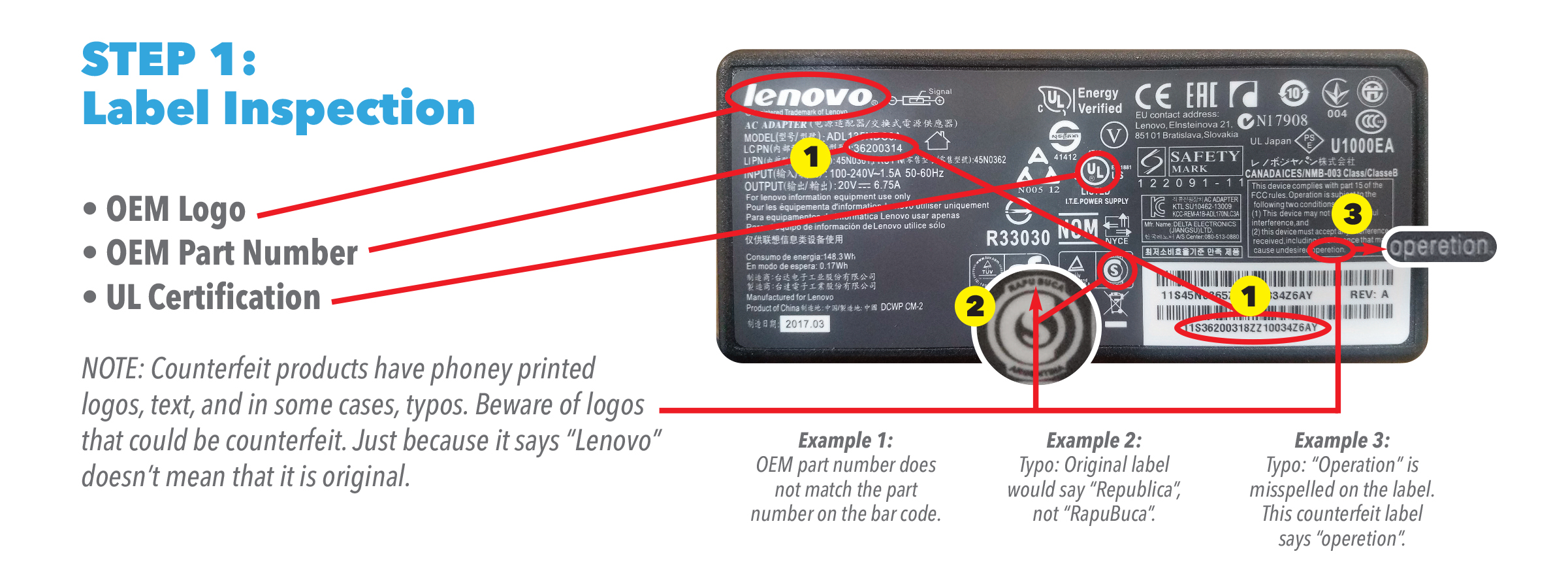
UL-Certified AC adapters should include:
- OEM logo
- Matching OEM part numbers
- UL Mark
- Clear text and no typos
If the label passes inspection, this still does not guarantee it is an authentic UL-certified AC adapter. That’s why further mechanical testing and inspection are required.
After label inspection, AGParts Education tests the AC adapters for power and current under load. Once the adapter passes, our technicians then perform an internal component inspection. We perform a spot check, opening a percentage of each shipment to verify:
- Industry-standard construction methods
- Authentic OEM identifiers
- Safety compliant materials
The best way to ensure that your school district has UL-certified AC adapters is to purchase from a supplier that sells authentic UL-certified AC adapters. At AGParts Education, the safety of your students and teachers are our number one priority. We only sell authentic UL-certified AC adapters.
For more information on how we can help with your district’s 1:1 Chromebook program, contact us today!
Originally published 7/14/2020. Updated on 8/25/2021, 3/30/2022.
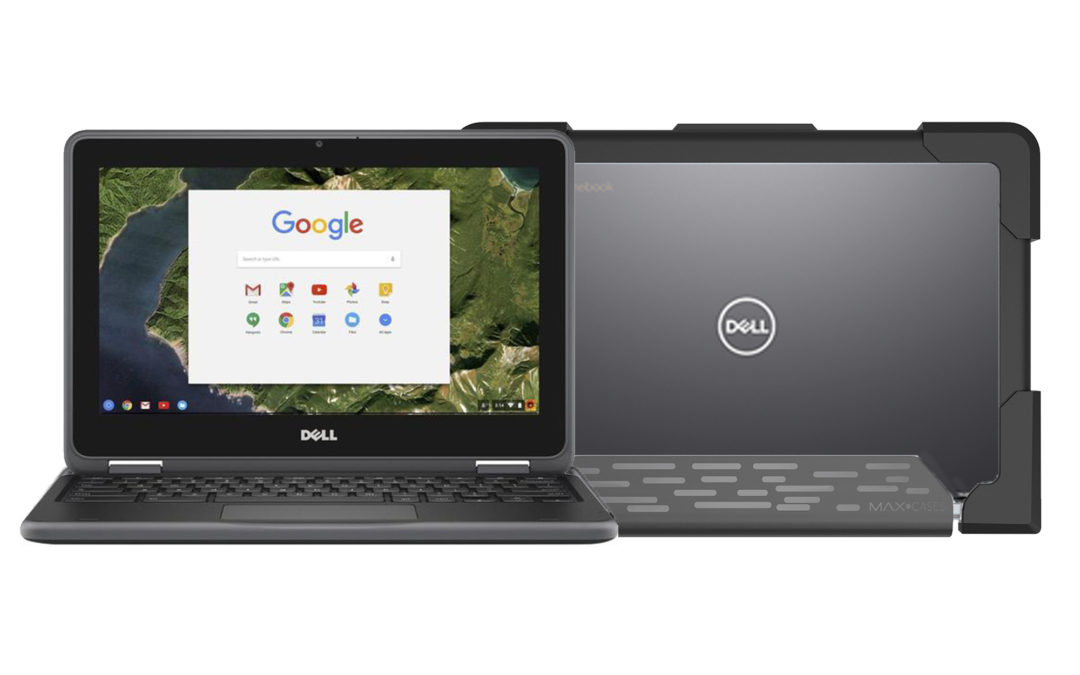
by AGParts Education | Accidental Damage Protection, Chromebook Repair, Chromebooks
Chromebooks are the most popular K-12 device used in schools today. They are affordable and easy to manage. As students use the devices, accidents are bound to happen. What will your school do when your Chromebooks need repaired?
Determining the most cost-effective solution to managing your 1:1 Chromebook deployment can be challenging. There are two ways to manage your repairs. We’ll explore both options below.
Option 1: In-House Repairs
Performing in-house repairs is a cost-effective and timely solution for many districts. Since there are few moving parts In a Chromebook, repairs are generally simple. There is no time lost in shipping devices or waiting for devices to return after repair. Repair turnaround is controlled by your bandwidth.
Don’t have the tech team necessary to perform in-house repairs? Leverage your student’s interest and skill with a Chromebook Repair Program.
If your district chooses in-house repairs, you’ll need Chromebook tutorials, tools, and support in case issues arise. Most importantly, you need a partner you can trust for replacement Chromebook parts. When considering a parts partner, keep the following in mind:
Quality of Parts
Where your school sources parts from matters. There is reason why OEMs (Acer, HP, Lenovo, etc.) do not sell generic or counterfeit parts. It’s the same reason why we don’t.
Generic and counterfeit parts may seem like a great deal, but they could be more than you bargain for. Made with substandard components, these parts have a higher likelihood of failure. Even worse, they pose a serious safety risk to your students and staff. Due to their faulty manufacturing and substandard components, they are a fire hazard.
Choose OEM or equivalent parts and UL-certified adapters. You can still save money on these parts by purchasing recertified parts.
A vendor putting their name on a part still doesn’t guarantee the parts are authentic. The only way to guarantee a part is authentic is to purchase parts from a supplier that only supplies authentic parts like AGParts Education. All parts are inspected and tested to verify their authenticity.
Availability & Lead Time
With shortages pervasive in every industry, Chromebook parts are no different. Unfortunately, there are parts suppliers that will overpromise and underdeliver. They promise your part is in stock but intentionally send you another part to buy time until your part does come in.
We’re not going to pretend we’ve been impervious to these shortages, but our global resources have allowed us to fulfill our school partners’ needs often. You never have to worry about any bait and switch. It goes against everything we stand for. If your part isn’t in stock, we’re going to tell you. And we’ll tell you when it becomes available as well.
With in-stock parts, expect your order to ship the same day.
Warranty & Returns
All parts are backed by our industry-leading one-year or limited-lifetime warranty. Just another way that we stand behind all our parts and products. So, kiss 90-day warranties goodbye. Say hello to a one-year parts warranty on adapters, batteries, and motherboards, and a limited-lifetime warranty on all other parts.
Order parts from us your school no longer needs? We don’t want your district to be stuck with unnecessary parts—send them back to us! We offer an extended return policy. In the spirit of partnership, we don’t apply restocking fees to these returns.
Option 2: Accidental Damage Protection
Safeguarding your Chromebook investment with an accidental damage protection like AGiProtect is another cost-effective way to manage Chromebook repairs. Powered by our sister company, AGiRepair, AGiProtect is a complete accidental damage protection plan for K-12 devices.
Unlike other ADP plans, AGiProtect is a one-time fixed cost with no hidden fees and unlimited repairs. There is no deductible to meet or repair fees. Not only that, but the same company that supplies your protection plan also performs your repairs. Often, companies will outsource repairs to a third party. With AGiProtect, all repairs are performed at a state-of-the-art facility by AGiRepair’s team of highly trained technicians. All parts are provided by AGParts Worldwide, our parent company.
From Chromebook parts to tech buyback, AGParts Education can help simplify your 1:1 Chromebook deployment. Supporting over 7,500 U.S. school districts, find out how we can help your district. Contact us today!

by AGParts Education | Acer, Announcements, Chromebooks, Education Technology, HP, K-12 Education
The classroom environment is constantly changing. Educators and students need devices that can keep up. Check out these new Chromebook models for education currently available or forthcoming in 2022.
For Students
Updated: Acer Chromebook 512
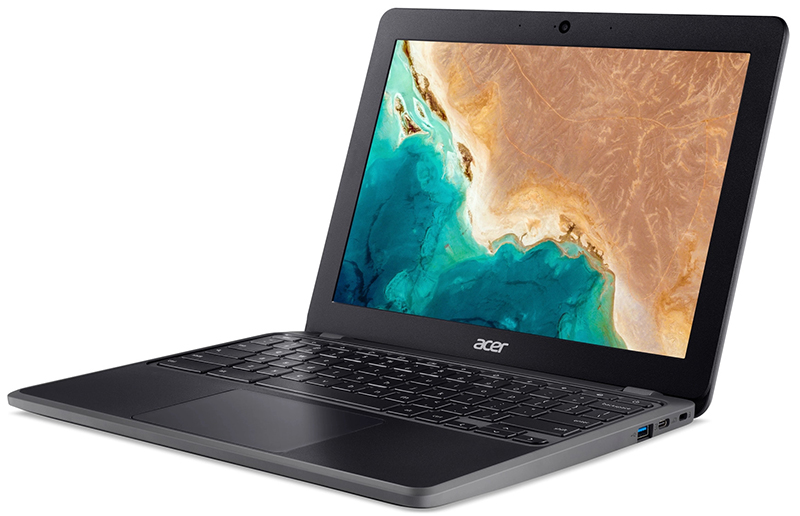
New Model: C852
Announced: January 2022
Price: starts at $350
Processor: Intel Celeron N4500, Intel Celeron N5100, or Intel Pentium Silver N6000
Battery: 12 hours
Memory: 4-8GB RAM
Storage: 32-64GB eMMC
Screen: 12.0”
Resolution: 1366 x 912
Convertible: 180-degree hinge
Touch: Optional
Ports: (2) USB-C port, (2) USB-A 2.0 port, (1) Micro SD slot, (1) Headphone/microphone combo jack
Acer Chromebook 512 (C852) trades the traditional 16:9 aspect ratio for 3:2. This taller display makes it more suitable for reading and writing. With a 180-degree hinge and optional touch capabilities, it’s built for collaboration. Made with more recyclable plastics, it features a damage-resistant keyboard.
Updated: Acer Chromebook 511

New Model: C734/T
Expected Release: February 2022
Price: starts at $350
Processor: Intel Celeron N4500 or Intel Celeron N5100
Battery: 12 hours
Memory: Up to 8GB RAM
Storage: Up to 64GB eMMC
Screen: 11.6”
Resolution: 1366 x 912
Convertible: 180-degree hinge
Touch: No
Ports: (2) USB-C port, (2) USB-A 2.0 port, (1) Micro SD slot, (1) Headphone/microphone combo jack
Similar in specs to the Acer Chromebook 512, the Acer Chromebook 511 (C734/T) features the toy-safe plastic making it suitable for the youngest students. With 180*degree hinge, students can easily share their screen with others.
Updated: Acer Chromebook Spin 311
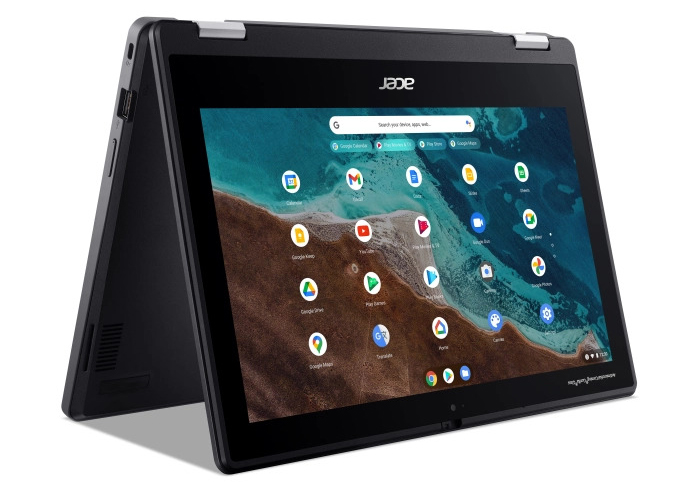
New Model: R722T
Expected Release: March 2022
Price Range: $400
Processor: MediaTek MT8183 2.0 GHz
Battery: 15 hours
Memory: Up to 8GB
Storage: Up to 64GB eMMC
Screen: 11.6”
Convertible: Yes
Touch: Yes
Ports: (1) USB-C port, (1) USB-A 2.0 port, (1) Headphone/microphone combo jack
Ideal for small hands, the convertible Acer Chromebook Spin 311 (R722T) features Antimicrobial Corning Gorilla glass for durability and enhanced hygiene. Keys are mechanically anchored to protect against curious students. The Chromebook is made of post-consumer recycled (PCR) making it particularly ecofriendly.
HP Fortis 11” G9 Q Chromebook
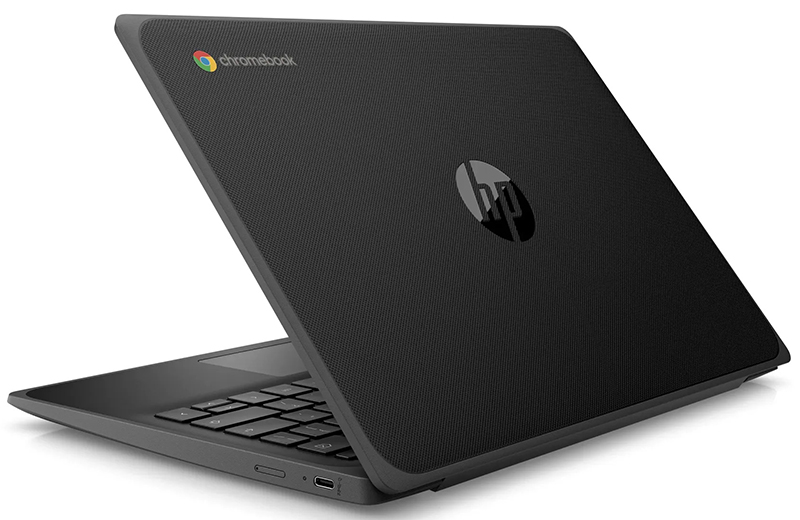
Expected Release: June 2022
Price Range: TBA
Processor: Qualcomm Snapdragon 7c
Memory: Up to 8GB
Storage: Up to 64GB eMMC
Screen: 11.6”
Ports: (2) USB-C ports, (1) USB-A port, (1) Headphone/microphone combo jack
With a battery that charges 90% in 90 minutes, the HP Fortis 11 G9 Q is part of HP’s brand-new education series of the same name. It features an HD privacy webcam and an anchored, spill-resistant keyboard. The new Fortis line claims to be ideal for blended learning and the entire unit can be wiped down with household disinfecting and cleaning wipes.
For Educators
Updated: Acer Chromebook 314

New Model: C934/T
Expected Release: Second half of 2022
Price: $430
Processor: Intel Celeron N Series, up to Intel Pentium Silver N6000
Battery: 10 hours
Memory: Up to 8GB RAM
Storage: Up to 128GB eMMC
Screen: 14”
Convertible: 180-degree hinge
Touch: No
Ports: (2) USB-C ports, (1) USB-A port, (1) headphone/microphone combo jack
The Acer Chromebook 314 features a flare-reducing webcam and upward-firing, making this Chromebook ideal for educators in noisy, busy environments. It also has the same 180-degree hinge, popular in this year’s Acer models.
HP Fortis 14” G10 Chromebook

Released: January 2022
Price Range: starting at $349
Processor: Intel Celeron Pentium processors
Memory: Up to 8GB LPDDR4x
Storage: Up to 128GB eMMC
Screen: 14”
Resolution: 1366×768 or 1920×1080
Convertible: No
Touch: Yes
Ports: (1) USB-C port, (2) USB-A ports, (1) HDMI port, (1) headphone/microphone combo jack
Carrying the title of the world’s first rugged 14” Chromebook, the HP Fortis 14” G10 Chromebook is ideal for the educator seeking options. With option upgrade both storage and resolution, this Chromebook from the HP’s new Fortis line is sure to please.
From Chromebook parts procurement to buyback, AGParts Education is your number one destination for all things regarding your 1:1 Chromebook deployment. Supporting over 7,500 U.S. school districts, find out how we can help your district. Contact us today!

by AGParts Education | Digital Learning, Education Technology, K-12 Education
Many classrooms across the globe are adopting some form of digital learning. And for good reason—over 90% of educators report that digital learning has some form of positive impact on their students. But what is digital learning? Today, we’ll answer that and more.
What is Digital Learning?
Digital learning is an instructional practice that uses technology to enhance a student’s education and learning experience. It generally gives students more control than traditional learning—whether that be in place or pacing. A variety of digital tools can be used within digital learning.
Digital learning is not exclusive to devices in the classroom. Moreover, studies show programs that expand a student’s access to computers and the internet alone don’t necessarily lead to better learning experiences for students. Thoughtful integration of digital tools is imperative.
There’s a wide range of digital tools and reliance on these tools varies between classrooms. Tools include games, e-textbooks, software, online learning, and one-to-one computing.
Benefits of Digital Learning
Now that we know what digital learning is, let’s explore some of its benefits.
Provides Access
Fundamentally, digital learning provides students with access to technology. Even the simplest of digital tools connects students to technology they may not have otherwise used.
Personalized Instruction & Learning
One of the most compelling benefits of digital learning is personalized learning. Whether synchronous or asynchronous, digital learning allows for highly individualized instruction based on key indicators like reading level and strengths and weaknesses of the student. Teachers are better able to tailor learning to student needs. Additionally, it’s easier for students to go at their own pace and focus on more challenging assignments.
Engages and Connects Students
Digital learning tools often involve discussion, debates, and other interactive exercises. These activities foster collaboration between students and between student and teacher. Digital learning allows for shyer students to engage with others more comfortably and sometimes in more nontraditional ways like instant messaging. Digital learning also can connect students with other digital learners across the country or globe.
Prepares Students for the Future
It is said that experience is the best teacher. No matter what the digital tool used, students learn digital skills from using technology hands on. The need for digital skills will only increase in an increasingly digital world. Digital learning inherently teaches digital literacy and equips students with digital skills. Not only are these skills required for middle- and high-skilled careers but they’re also a requirement for almost every job sector.
Steps to Digital Learning Success
If your district is considering implementing digital learning, here are six tips to successful integration.
Plan and budget accordingly. This is the most important, and longest, part of the process. Digital learning should enhance learning experiences and outcomes. Identify instructional shortcomings that will be improved by implementing digital learning tools. Secure buy in from key stakeholders—administrators, staff, teachers, parents, students, etc.
Research digital tools available and choose the best option for your school. From one-to-one computing to bring-your-own-device programs, there are options for digital learning. It is not one size fits all. If introducing new devices into the classroom, be sure to determine the best device for your students.
Train students, faculty, and staff. Be mindful that implementing a digital learning program in your school is likely to be a significant change for all. It could be a student’s first encounter with technology, or a teachers first encounter with that type of device. To overcome these challenges, consistent and comprehensive training is essential. Training should include a review of the device, daily usage, and basic troubleshooting.
Schedule time on spent using digital learning tools. To monitor screen time, institute “lids down” time. Include hands-on activities, learning, and play without digital tools in the curriculum. Remember: digital tools should never replace instruction but should enhance learning.
Teach the nine elements of digital citizenship and online safety to students, regardless of age. As with appropriate training, consistent and comprehensive teaching on these topics is imperative. It will position students to be successful and safe as digital citizens.
Evaluate what works and what doesn’t. Key to maintaining a robust digital learning program is auditing your process and adjust as needed.
How can AGParts Education simplify your digital learning program? From Chromebook parts supply to tech buyback, we can help. Contact us today to get started.

by AGParts Education | Cybersecurity, Digital Citizenship, Education Technology, K-12 Education
October is Cybersecurity Awareness month. Cyberattacks have been more prevalent in schools, with 408 disclosed attacks in 2020. What can your school do to prevent falling victim to these attacks? What are the most common threats to cybersecurity in education? Today, we’ll answer both questions.
Why Cyberattacks are on the Rise in Schools
The increase of cyberattacks can be attributed to several factors. Schools are viewed as soft and easy targets. Administrators have incorrectly believed that schools have nothing of value or worthy of taking by cyber criminals. More importantly, many schools lack the resources to build a robust cybersecurity program. Often, there isn’t a full-time employee dedicated to cybersecurity. Beyond that, districts often lack employees that have the knowledge and expertise in cybersecurity.
The pandemic also uncovered cybersecurity vulnerabilities. As schools rushed to introduce new technologies for remote learning, it created security gaps. Many schools dealt with videobombing and phishing scams.
Types of Cybersecurity Threats
Here are the most common cybersecurity threats:
Data Breach
As the name implies, a data breach is a leak of sensitive information from a secure to unsecure environment. Whether data is copied or transmitted, it is then used in an unauthorized manner. Generally, the type of information breached is confidential, like student records.
Spoofing & Phishing
Spoofing is essentially a forged email. It can appear to come from a well-known and reputable organization. Upon closer inspection, its sender is someone else entirely.
Phishing is another email scam. The sender falsely poses as a legitimate organization in the attempt to obtain sensitive information (passwords, credit cards, bank information).
Spear phishing is a type of targeted phishing. These appear to be from someone you know with a reasonable request. Upon closer inspection of the email address, you can see that the sender is unknown.
Malware, Scareware & Ransomware
Malware is software that is intentionally designed to disrupt, damage, or gain unauthorized access to a computer, server, or network. Systems can become infected when users download malware disguised as legitimate software online, through peer-to-peer sharing, or via email.
Scareware is a type of malware designed to trick users into buying unnecessary and potentially harmful software. Scareware is socially engineered to cause shock, anxiety, fear, or the perception of a threat.
Another type of malware, ransomware encrypts users’ files then demands the payment of a ransom for users to regain access to their data. Mainly delivered via spoofing or phishing scams, it can also include an element of extortion—releasing user data or images of the victim is threatened if the ransom is not paid.
Denial of Service
Denial of Service (DoS) attacks intentionally overload or disrupt servers to make a website, machine, or network unavailable. While DoS don’t typically result in data theft, they can cost the victim a significant amount of time and money.
Outdated Software
A more passive attack, outdated software creates vulnerabilities where unauthorized users can gain access to networks.
Removable Media
Perhaps not as prevalent today but still a risk in schools, removable media (USB drives, external hard drives, DVDs/CDs) can pose cybersecurity challenges. Easily stolen, these devices can be manipulated with malware. Corrupted devices can be intentionally or unknowingly connected computers. Then, device files can infect computers or networks.
Safeguarding Your School Against Threats
Key to cybersecurity in education is protecting your school against cyberattacks. Here’s what your school can do to actively prevent cyberattacks.
Define & Promote Policies
Creating and promoting computer and internet usage policies can help insulate your school from cyberthreats. These policies, like an Acceptable Use Agreement, define acceptable terms of use for computer systems. They should include any local, state, or federal regulations about information security and privacy
Equally important is creating an Incident Response Procedure in the event of a cyberattack. This will define how to respond to the attack, including operation and communication guidelines.
Update OS & Software Regularly
One of the easiest ways to prevent cyberattacks is by keeping operating systems and software up to date. Updates provide vital security patches and enhancements to both operating systems and software. Maintaining updates can be your first line of defense against malware attacks.
Store Data Securely
Data should be stored securely and in compliance with the Family Educational Rights and Privacy Act (FERPA). This is particularly important with increased use of cloud systems. Data should be regularly backed up in the event of accidental or intentional corruption.
Educate Students & Faculty
Reaching young users is key in quelling the tide of cyberattacks. Do this by integrating a digital citizenship curriculum for students of all ages. Educating students on the nine elements of digital citizenship speaks to their role as a digital citizen and the responsible use of technology. Not only could this prevent future attacks from younger generations, but it can also alert young users to cyberthreats as well as how to correctly respond to such threats.
Educating staff and faculty about cybersecurity can prevent attacks that occur due to behavioral issues. Teaching the importance of strong passwords, multifactor authentication, and email etiquette can prevent these types of attacks. Training should be ongoing and sustainable.
AGParts Education has been in the classroom since the Chromebook revolution began, supporting Council Bluffs School District as one of Google’s first 1:1 pilot schools. Find out why 6,000+ US school districts, including Council Bluffs, trust us in Chromebook parts supply, tech buyback, and more. Contact us today to see how we can help your school district today.
Page 4 of 11« First«...23456...10...»Last »













Recent Comments